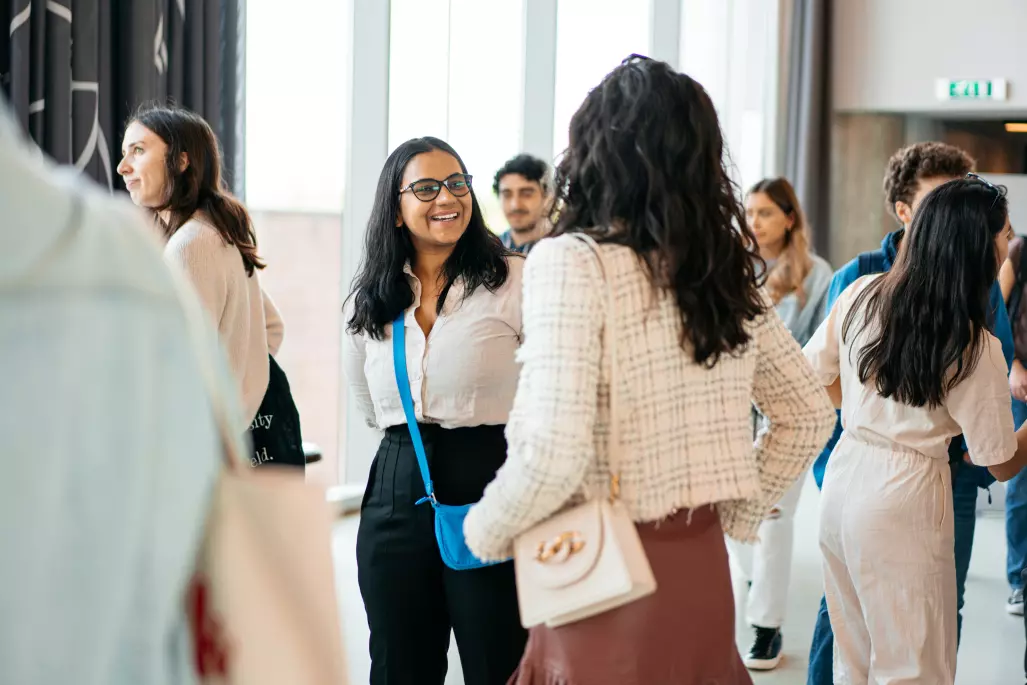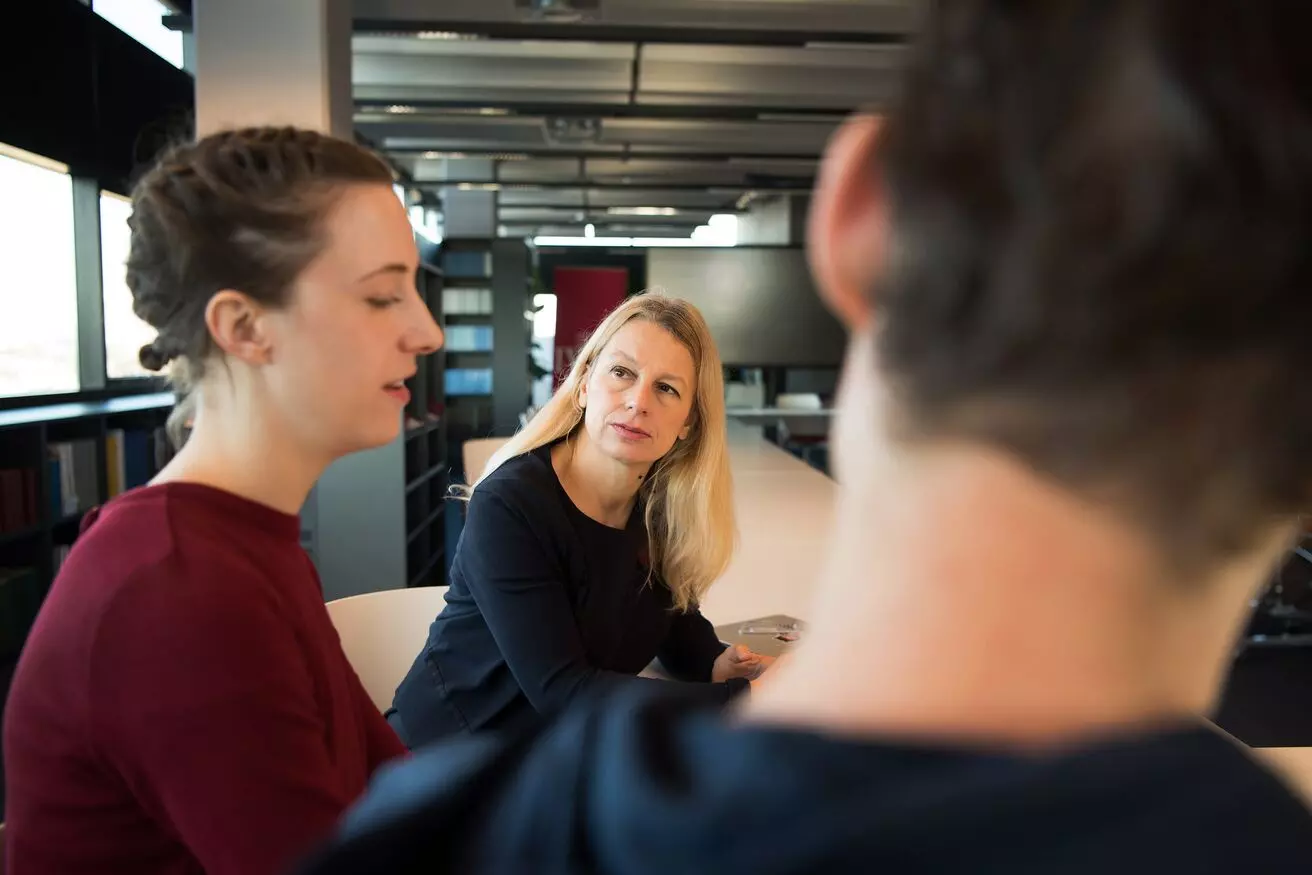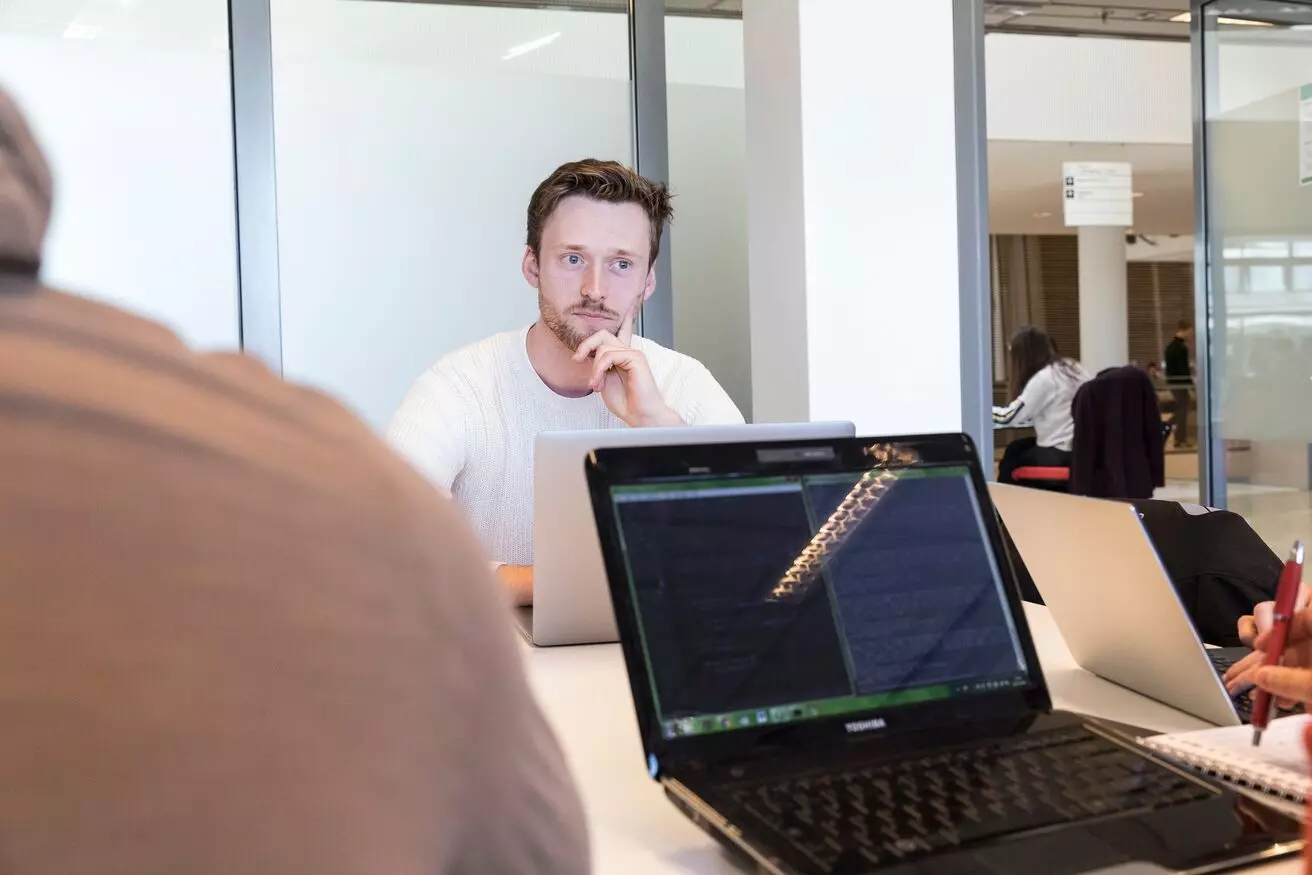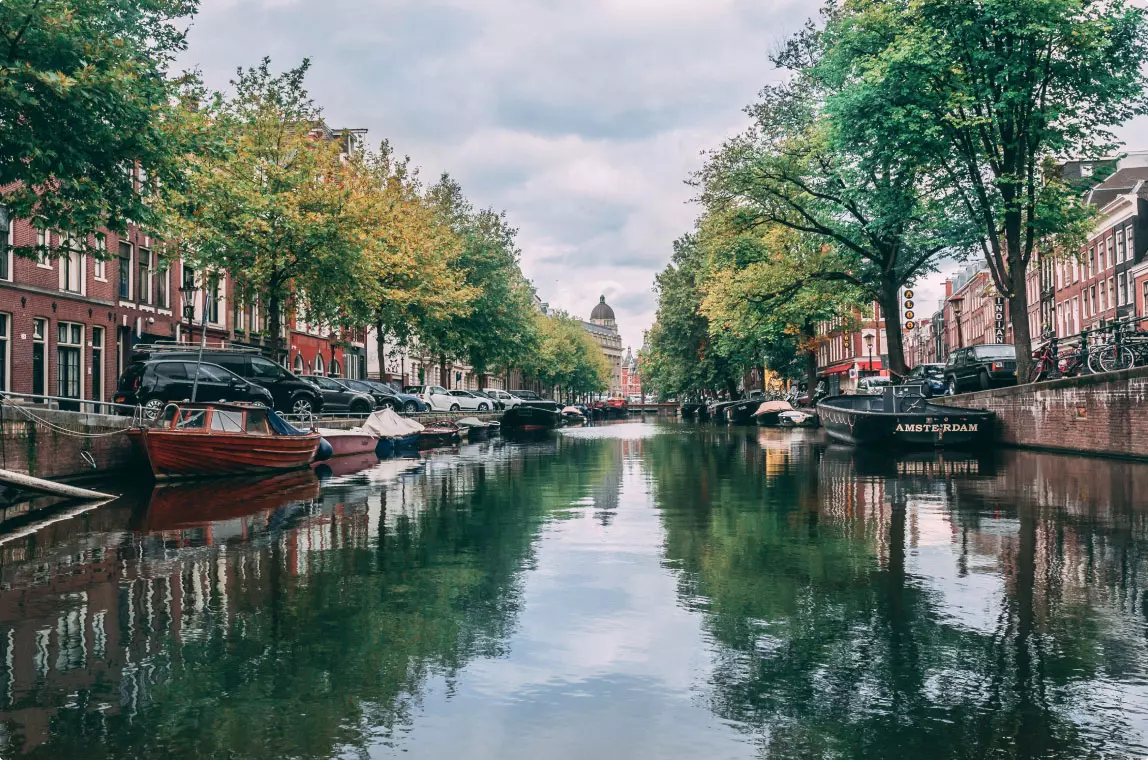This website uses cookies
We, and third parties, use cookies on our website. We use cookies to ensure that our website functions properly, to store your preferences, to gain insight into visitor behavior, but also for marketing and social media purposes (showing personalized advertisements). By clicking 'Accept', you agree to the use of all cookies. In our Cookie Statement. you can read more about the cookies we use and save or change your preferences. By clicking 'Refuse' you only agree to the use of functional cookies.

Are you interested in challenging deep learning at its core? And specifically, do you want to perform cutting-edge research and develop novel advances in hyperbolic deep learning for computer vision? Then check out the vacancy below and apply for a PhD position in this exciting research direction.
Two PhD Positions on Hyperbolic Deep Learning for Computer Vision
- Faculty of Science
- 14606
- Master's
- €3.059 - €3.881
- Closes on31-12-2025

Are you interested in challenging deep learning at its core? And specifically, do you want to perform cutting-edge research and develop novel advances in hyperbolic deep learning for computer vision? Then check out the vacancy below and apply for a PhD position in this exciting research direction.
Two PhD Positions on Hyperbolic Deep Learning for Computer Vision
- Faculty of Science
- 14606
- Master's
- €3.059 - €3.881
- Closes on31-12-2025
Working at the UvA
Join Us!
Modern deep learning is progressing fast. Yet even the most advanced neural networks are paired with crucial limitations, such as making arbitrarily bad predictions, propagating biases, and failing to grasp known relations. These limitations reveal a blindspot: modern neural networks misrepresent hierarchies. Hierarchies are ubiquitous in computer vision and hierarchical learning is crucial to address the shortcomings of today’s neural networks. Hierarchies govern how concepts are related, how objects and scenes are spatially arranged, how actions are organized over time, and how cause and effect is described.

Working at the UvA
Join Us!
Modern deep learning is progressing fast. Yet even the most advanced neural networks are paired with crucial limitations, such as making arbitrarily bad predictions, propagating biases, and failing to grasp known relations. These limitations reveal a blindspot: modern neural networks misrepresent hierarchies. Hierarchies are ubiquitous in computer vision and hierarchical learning is crucial to address the shortcomings of today’s neural networks. Hierarchies govern how concepts are related, how objects and scenes are spatially arranged, how actions are organized over time, and how cause and effect is described.
All about this vacancy
This is what you will do
If hierarchies are so important, why are they not central in neural networks already? The reason is geometry. The main advances in neural networks are built on the same geometric foundation, namely Euclidean geometry. This choice however leads to fundamental limitations that cannot be overcome with bigger models and larger datasets. A critical issue is the embedding of hierarchies, for which a different geometry is better suited, namely hyperbolic geometry. Seminal works have shown that for embedding hierarchies, we should abandon Euclidean geometry altogether and operate in hyperbolic space. Our lab has published multiple papers showing that hyperbolic deep learning has strong potential for computer vision, from hyperbolic image segmentation to hyperbolic tree embeddings and hyperbolic vision-language models, see this webpage for further details on the papers.
Your goal will be to bring hyperbolic deep learning for computer vision to the next level. This goal includes directions such as building hyperbolic vision transformers, making it possible to learn from multiple hierarchies, developing theory and implementations to make hyperbolic learning stable and scalable, and creating the next generation of vision-language models in hyperbolic space.
Specifically, we are looking for one PhD student with a keen interest in the theoretical side of hyperbolic deep learning and one PhD student with a keen interest in the algorithmic side of hyperbolic deep learning.
Tasks and responsibilities:
- Conduct high-impact research on hyperbolic deep learning for computer vision, resulting in publications at top-tier international conferences and journals;
- Develop theory, implementations, and open-source software for hyperbolic deep learning;
- Collaborate with other PhD students and researchers on hyperbolic deep learning;
- Assist with teaching by being Teaching Assistantand supervising BSc or MSc students;
- Present your work at local and international conferences.
What we ask of you
- A MSc degree in Artificial Intelligence, Computer Science, Mathematics, or related discipline;
- A strong interest in developing creative solutions to advance hyperbolic deep learning;
- A background in machine learning, deep learning, and/or computer vision;
- Experience in programming. Python is a must, lower-level GPU programming experience is a bonus;
- Strong grasp on the English language;
- Eager to collaborate and to publish high-impact papers.
This is what we offer you
A temporary contract for 38 hours per week for the duration of 4 years (the initial contract will be for a period of 18 months and after satisfactory evaluation it will be extended for a total duration of 4 years). The preferred starting date is March 1st 2026. This should lead to a dissertation (PhD thesis). We will draft an educational plan that includes attendance of courses and (international) meetings. We also expect you to assist in teaching undergraduates and master students.
The gross monthly salary, based on 38 hours per week and dependent on relevant experience, ranges between € 3,059 to € 3,881 (scale P). This does not include 8% holiday allowance and 8,3% year-end allowance. The UFO profile PhD candidate is applicable. A favourable tax agreement, the ‘30% ruling’, may apply to non-Dutch applicants. The Collective Labour Agreement of Universities of the Netherlands is applicable.
Curious about our extensive secondary benefits package? You can read more about it here.
All about this vacancy
This is what you will do
If hierarchies are so important, why are they not central in neural networks already? The reason is geometry. The main advances in neural networks are built on the same geometric foundation, namely Euclidean geometry. This choice however leads to fundamental limitations that cannot be overcome with bigger models and larger datasets. A critical issue is the embedding of hierarchies, for which a different geometry is better suited, namely hyperbolic geometry. Seminal works have shown that for embedding hierarchies, we should abandon Euclidean geometry altogether and operate in hyperbolic space. Our lab has published multiple papers showing that hyperbolic deep learning has strong potential for computer vision, from hyperbolic image segmentation to hyperbolic tree embeddings and hyperbolic vision-language models, see this webpage for further details on the papers.
Your goal will be to bring hyperbolic deep learning for computer vision to the next level. This goal includes directions such as building hyperbolic vision transformers, making it possible to learn from multiple hierarchies, developing theory and implementations to make hyperbolic learning stable and scalable, and creating the next generation of vision-language models in hyperbolic space.
Specifically, we are looking for one PhD student with a keen interest in the theoretical side of hyperbolic deep learning and one PhD student with a keen interest in the algorithmic side of hyperbolic deep learning.
Tasks and responsibilities:
- Conduct high-impact research on hyperbolic deep learning for computer vision, resulting in publications at top-tier international conferences and journals;
- Develop theory, implementations, and open-source software for hyperbolic deep learning;
- Collaborate with other PhD students and researchers on hyperbolic deep learning;
- Assist with teaching by being Teaching Assistantand supervising BSc or MSc students;
- Present your work at local and international conferences.
What we ask of you
- A MSc degree in Artificial Intelligence, Computer Science, Mathematics, or related discipline;
- A strong interest in developing creative solutions to advance hyperbolic deep learning;
- A background in machine learning, deep learning, and/or computer vision;
- Experience in programming. Python is a must, lower-level GPU programming experience is a bonus;
- Strong grasp on the English language;
- Eager to collaborate and to publish high-impact papers.
This is what we offer you
A temporary contract for 38 hours per week for the duration of 4 years (the initial contract will be for a period of 18 months and after satisfactory evaluation it will be extended for a total duration of 4 years). The preferred starting date is March 1st 2026. This should lead to a dissertation (PhD thesis). We will draft an educational plan that includes attendance of courses and (international) meetings. We also expect you to assist in teaching undergraduates and master students.
The gross monthly salary, based on 38 hours per week and dependent on relevant experience, ranges between € 3,059 to € 3,881 (scale P). This does not include 8% holiday allowance and 8,3% year-end allowance. The UFO profile PhD candidate is applicable. A favourable tax agreement, the ‘30% ruling’, may apply to non-Dutch applicants. The Collective Labour Agreement of Universities of the Netherlands is applicable.
Curious about our extensive secondary benefits package? You can read more about it here.
Your place at the UvA
You will work in this team
The Faculty of Science has a student body of around 8,000, as well as 1,800 members of staff working in education, research or support services. Researchers and students at the Faculty of Science are fascinated by every aspect of how the world works, be it elementary particles, the birth of the universe or the functioning of the brain.
You will be part of the Video & Image Sense (VIS) Lab, which is part of the Informatics Institute. The Informatics Institute is located in the new Lab42 building at the Amsterdam Science Park. The VIS Lab performs research on deep learning and computer vision, from hyperbolic learning to medical imaging and from NeuroAI to foundation models.
Want to know more about our organisation? Read more about working at the University of Amsterdam.
More about the UvA
Your place at the UvA
This is where you will be working
You will work in this team
The Faculty of Science has a student body of around 8,000, as well as 1,800 members of staff working in education, research or support services. Researchers and students at the Faculty of Science are fascinated by every aspect of how the world works, be it elementary particles, the birth of the universe or the functioning of the brain.
You will be part of the Video & Image Sense (VIS) Lab, which is part of the Informatics Institute. The Informatics Institute is located in the new Lab42 building at the Amsterdam Science Park. The VIS Lab performs research on deep learning and computer vision, from hyperbolic learning to medical imaging and from NeuroAI to foundation models.
Want to know more about our organisation? Read more about working at the University of Amsterdam.
More about the UvA
Important to know
Your application & contact
If you feel the profile fits you, and you are interested in the job, we look forward to receiving your application. You can apply online via the button below. We accept applications until and including December 31st 2025. Applications will be reviewed from the middle of January onwards due to the Christmas and New Year break.
Applications should include the following information (all files besides your cv should be submitted in one single pdf file):
- a detailed CV including the months (not just years) when referring to your education and work experience (max 2 pages);
- a letter of motivation, which includes your preference for performing theoretical and/or algorithmic research (max 1 page);
- a list of publications or prior projects (max 1 page);
- the names and email addresses of two references who can provide a recommendation;
- a copy of your MSc thesis.
A knowledge security check can be part of the selection procedure.
(for details: national knowledge security guidelines)
Only complete applications received within the response period via the link below will be considered.
If you have any questions or do you require additional information? Please contact:
- Pascal Mettes, Assistant Professor, [email protected]
Diversity, Equity & Inclusion
Important to know
Your application & contact
If you feel the profile fits you, and you are interested in the job, we look forward to receiving your application. You can apply online via the button below. We accept applications until and including December 31st 2025. Applications will be reviewed from the middle of January onwards due to the Christmas and New Year break.
Applications should include the following information (all files besides your cv should be submitted in one single pdf file):
- a detailed CV including the months (not just years) when referring to your education and work experience (max 2 pages);
- a letter of motivation, which includes your preference for performing theoretical and/or algorithmic research (max 1 page);
- a list of publications or prior projects (max 1 page);
- the names and email addresses of two references who can provide a recommendation;
- a copy of your MSc thesis.
A knowledge security check can be part of the selection procedure.
(for details: national knowledge security guidelines)
Only complete applications received within the response period via the link below will be considered.
If you have any questions or do you require additional information? Please contact:
- Pascal Mettes, Assistant Professor, [email protected]
Other interesting vacancies for you

Dean PPLE College (internal vacancy)
- Amsterdam Law School
- €7.403 - €10.441
- PhD
- Closes on15-12-2025

Postdoc position: Algebraic Complexity, Asymptotic Spectra and Tensors
- Faculty of Science
- €3.546 - €5.538
- PhD
- Closes on31-12-2025

Advisor Research Funding
- IXA-UvA
- €4.728 - €7.297
- University
- Closes on04-01-2026
Other interesting vacancies for you

Dean PPLE College (internal vacancy)
- Amsterdam Law School
- €7.403 - €10.441
- PhD
- Closes on15-12-2025

Postdoc position: Algebraic Complexity, Asymptotic Spectra and Tensors
- Faculty of Science
- €3.546 - €5.538
- PhD
- Closes on31-12-2025

Advisor Research Funding
- IXA-UvA
- €4.728 - €7.297
- University
- Closes on04-01-2026

Don't miss out on your dream job!

